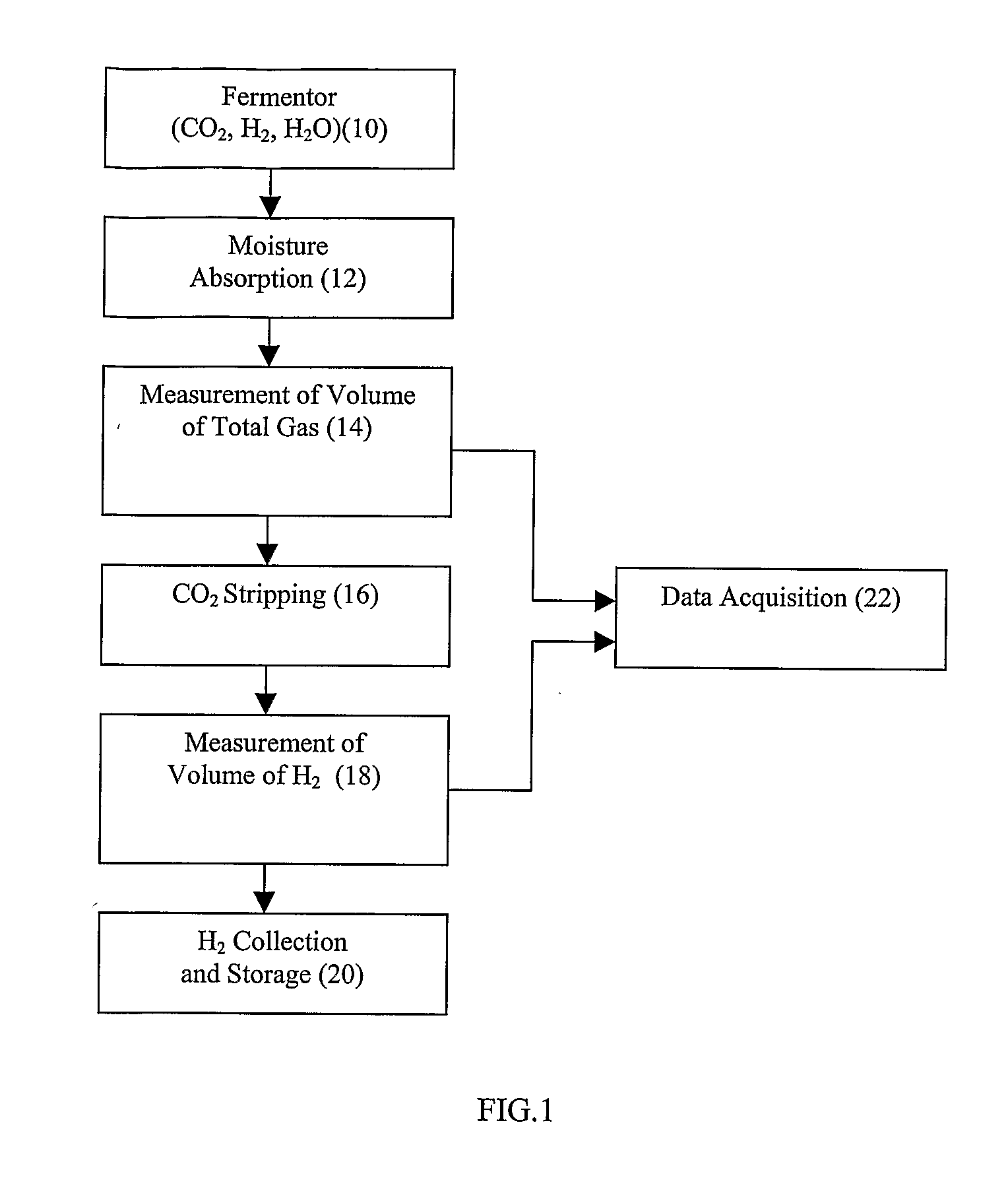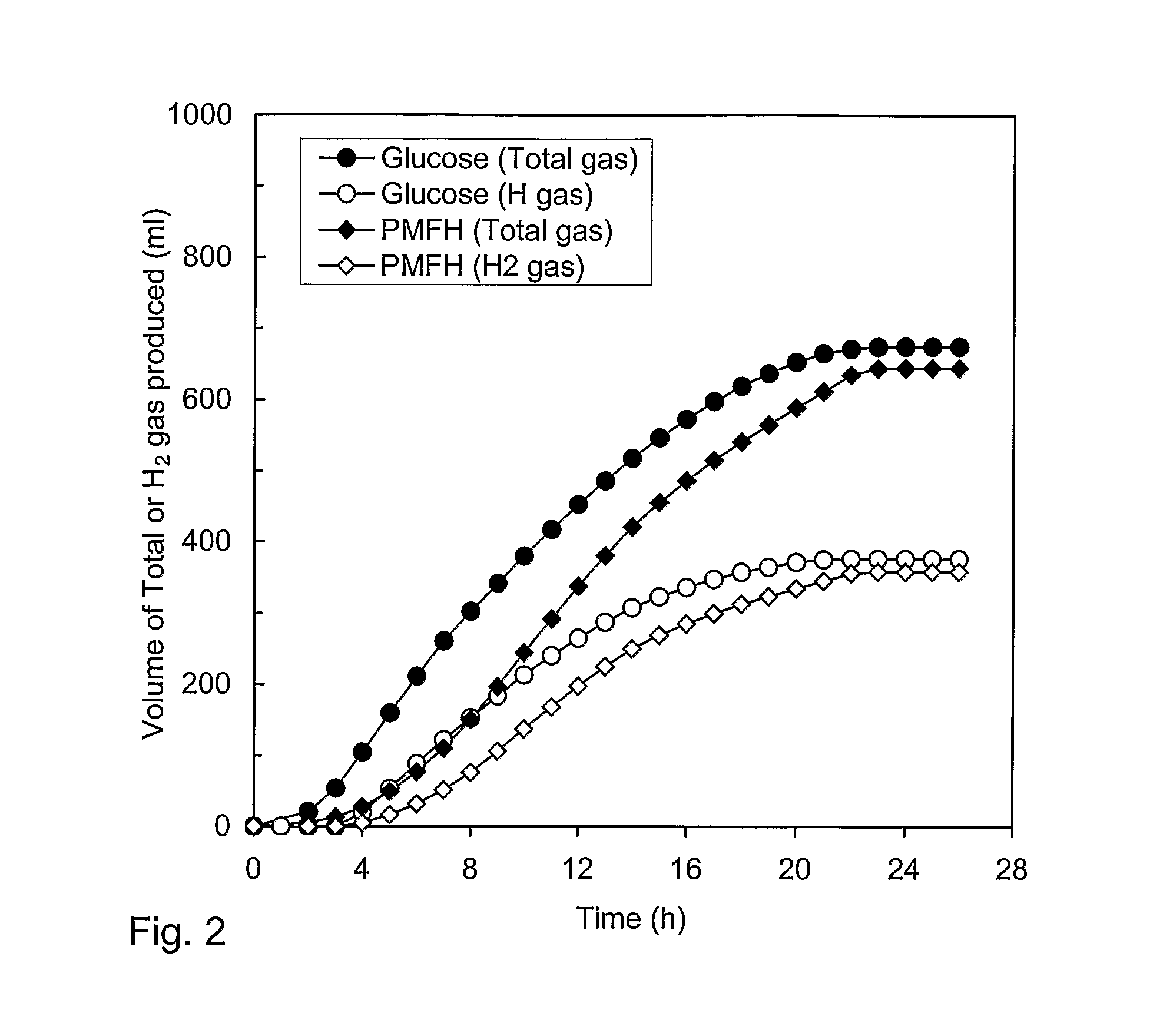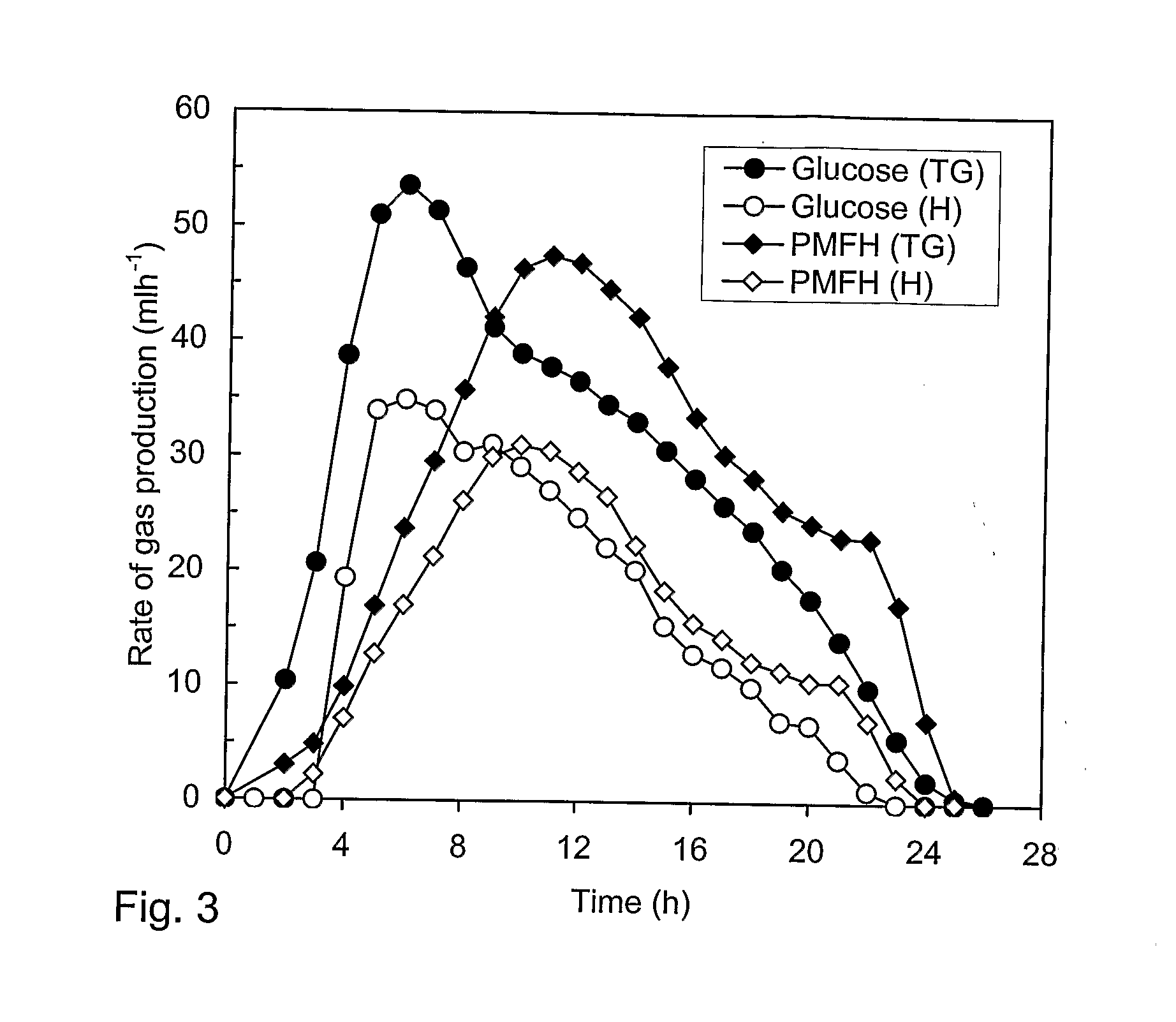Methods and bacterial strains for producing hydrogen from biomass
- Summary
- Abstract
- Description
- Claims
- Application Information
AI Technical Summary
Benefits of technology
Problems solved by technology
Method used
Image
Examples
example 1
Hydrogen Production from Pulp Mill Waste Fiber
[0059] The feasibility of producing hydrogen from highly lignocellulosic pulp mill waste fiber was assessed to compare hydrogen production from a preferred substrate such as glucose with the production obtained from waste streams. Typically wood fiber may be made up of lignin (20-28%), cellulose (42-45%) and hemicellulose (27-30%). The hemicellulose and cellulose fractions may constitute about 70% of total wood mass but the proportion of each constituent varies depending on the source and type of wood. In many cases, cellulose may be embedded in a lignin matrix to constitute lignocellulose which is generally accepted to be a linear carbohydrate polymer consisting of repeating D (+) glucose units linked by β1→4 glucosidic bonds with the degree of polymerization depending on the source of the wood. These bonds can be hydrolyzed in strong acid conditions to release free glucose. Hemicellulose is also a carbohydrate, generally accepted to b...
example 2
Hydrogen Production from Cheese Whey
[0068] The feasibility of employing biomass streams from food and dairy processing for hydrogen production was assessed. They may contain readily fermentable sugars and may require little or no pretreatment for use in hydrogen production. Cheese whey makes up a large part of the volume of the total milk utilized in the cheese making process and contains a large part of the total solids in the original milk but has low levels of protein. Depending on the goals of the manufacturer, it may be discarded without further treatment (unskimmed whey), defatted (skimmed), or the residual proteins may be recovered and formulated into a protein-rich whey drink (deproteinized whey). Cheese whey is normally acidic having a pH in the range of 4.5 to 5.5. The levels of residual lactose, proteins and other components present in whey may vary according to the type of cheese manufactured. For the purpose of producing hydrogen, cheese whey may first be diluted such ...
example 3
Bioprospecting for Suitable Bacterial Isolates Capable of Hydrogen Production
[0072] New hydrogen-producing strains collected from natural environments were investigated. Clostridium species exposed to unfavorable environmental conditions form endospores which facilitate their survival. These spores are resistant to mild temperature treatment and only recommence vegetative growth at moderately high temperatures (Hyung et al., (1983) Ultrastructure and extreme heat resistance of spores from thermophilic Clostridium species. J. Bacteriol. 156, 1332-1337.). This property was exploited to enrich for spore-forming microorganisms from nature. Anaerobic cultivation techniques were used throughout this process. Soil samples were obtained from different environments in British Columbia including a bog, the submerged shoreline of a river, a seasonally flooded potato field and a flower garden.
[0073] For the germination of spores, 1-2 g of each soil sample was placed in 10 ml of a modified Pep...
PUM
| Property | Measurement | Unit |
|---|---|---|
| Temperature | aaaaa | aaaaa |
| Temperature | aaaaa | aaaaa |
| Temperature | aaaaa | aaaaa |
Abstract
Description
Claims
Application Information
 Login to View More
Login to View More - R&D
- Intellectual Property
- Life Sciences
- Materials
- Tech Scout
- Unparalleled Data Quality
- Higher Quality Content
- 60% Fewer Hallucinations
Browse by: Latest US Patents, China's latest patents, Technical Efficacy Thesaurus, Application Domain, Technology Topic, Popular Technical Reports.
© 2025 PatSnap. All rights reserved.Legal|Privacy policy|Modern Slavery Act Transparency Statement|Sitemap|About US| Contact US: help@patsnap.com



